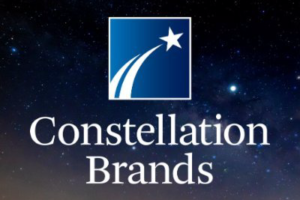Decades of expertise in information technology (IT) and cloud systems could drive this artificial intelligence (AI) specialist even higher.
One of the most pronounced shifts in the business world over the past two decades has been the ascent of technology companies among the world’s most valuable enterprises. Just 20 years ago, industrial and energy heavyweights General Electric and ExxonMobile topped the charts when measured by market cap, valued at $319 billion and $283 billion, respectively. Now, two decades later, technology leaders rule the roost.
Apple tops the list (as of this writing), and Microsoft is currently No. 2, with market caps of $3.4 trillion and $3 trillion, respectively. Nvidia‘s rise over the past 18 months has been nothing short of astonishing, adding nearly $2.2 trillion since early last year, climbing to $2.5 trillion and coming in at No. 3. Alphabet, Amazon, and Meta Platforms boast market caps of $1.9 trillion, $1.8 trillion, and $1.3 trillion, respectively. The common thread among these top players is that they were early adopters of artificial intelligence (AI) — even before the technology went viral in early 2023.
With a market cap of just $391 billion, it might seem like wishful thinking to suggest that Oracle (ORCL -0.56%) might be in the running for membership in the $1 trillion club. However, the business’s trajectory and management’s outlook suggest demand for generative AI could drive accelerating growth in the coming years.

Image source: Getty Images.
A trusted AI partner
Oracle’s suite of offerings, which includes database, cloud, and enterprise software, is used by 98% of Global Fortune 500 companies. This gives the company an advantage as its customers seek to join the AI revolution.
This dynamic has helped fuel robust overall growth. During Oracle’s fiscal 2024 fourth quarter (ended May 31), revenue grew 3% year over year to $14.3 billion, while its operating income climbed 15% — but that only tells part of the story.
During the fourth quarter call with analysts, CEO Safra Catz noted that customers had signed 30 AI contracts worth $12 billion during the quarter, bringing the total to $17 million for the year, among them “the largest sales contracts” in the company’s history. Furthermore, CTO Larry Ellison said he believes the recent cloud deal to build Oracle Cloud Infrastructure (OCI) inside Microsoft Azure Cloud will “turbocharge [Oracle’s] cloud database growth.”
These new deals drove Oracle’s remaining performance obligation (RPO) — or contracts not yet included in revenue — up 44% year over year to $98 billion. It’s always a positive indicator when RPO grows faster than revenue, as it illustrates robust sales pipeline growth. In this case, it also shows that there is a strong demand for cloud and AI solutions among Oracle’s customers.
As such, the company’s 2025 guidance calls for revenue to accelerate in each successive quarter, resulting in double-digit revenue growth for the fiscal year. In the first quarter, Oracle expects its revenue growth rate to more than double sequentially to 6% at the midpoint of its guidance, driven by cloud revenue growth of 22%. This will fuel adjusted earnings per share (EPS) growth of 13%. Given management’s commentary, each successive quarter will be even better.
We’ll have more current information when Oracle reports its fiscal 2025 first-quarter results after the market close on Monday, Sept. 9.
The path to $1 trillion
Oracle has a long history of cloud and AI expertise. This is something new that will appeal to existing customers as they look to integrate generative AI into their operations. That said, the ongoing adoption of AI will take place over years, if not decades.
According to Wall Street, Oracle is expected to generate revenue of $57.9 billion in its fiscal 2025 (which began June 1), giving it a forward price-to-sales (P/S) ratio of less than 7. Assuming its P/S ratio remains constant, Oracle would need to grow its revenue to approximately $148 billion annually to support a $1 trillion market cap.
Analysts are forecasting revenue growth of about 20% for the full fiscal year. If the company maintains that 20% sales growth, Oracle could reach the $1 trillion market cap by 2030. Even if its sales grow at a more moderate 11% pace — Wall Street’s current expectations for fiscal 2026 — Oracle would still surpass the $1 trillion threshold by 2034.
However, forecasts regarding the impact of generative AI continue to climb. The market could be worth between $2.6 trillion and $4.4 trillion annually in the coming years, according to global management consulting firm McKinsey & Company.
If the company can continue to serve its customers looking to make the jump to AI, this will reflect in Oracle’s growth rate, and the company will join the ranks of trillionaires sooner than later.
John Mackey, former CEO of Whole Foods Market, an Amazon subsidiary, is a member of The Motley Fool’s board of directors. Suzanne Frey, an executive at Alphabet, is a member of The Motley Fool’s board of directors. Randi Zuckerberg, a former director of market development and spokeswoman for Facebook and sister to Meta Platforms CEO Mark Zuckerberg, is a member of The Motley Fool’s board of directors. Danny Vena has positions in Alphabet, Amazon, Apple, Meta Platforms, Microsoft, and Nvidia. The Motley Fool has positions in and recommends Alphabet, Amazon, Apple, Meta Platforms, Microsoft, Nvidia, and Oracle. The Motley Fool recommends the following options: long January 2026 $395 calls on Microsoft and short January 2026 $405 calls on Microsoft. The Motley Fool has a disclosure policy.






